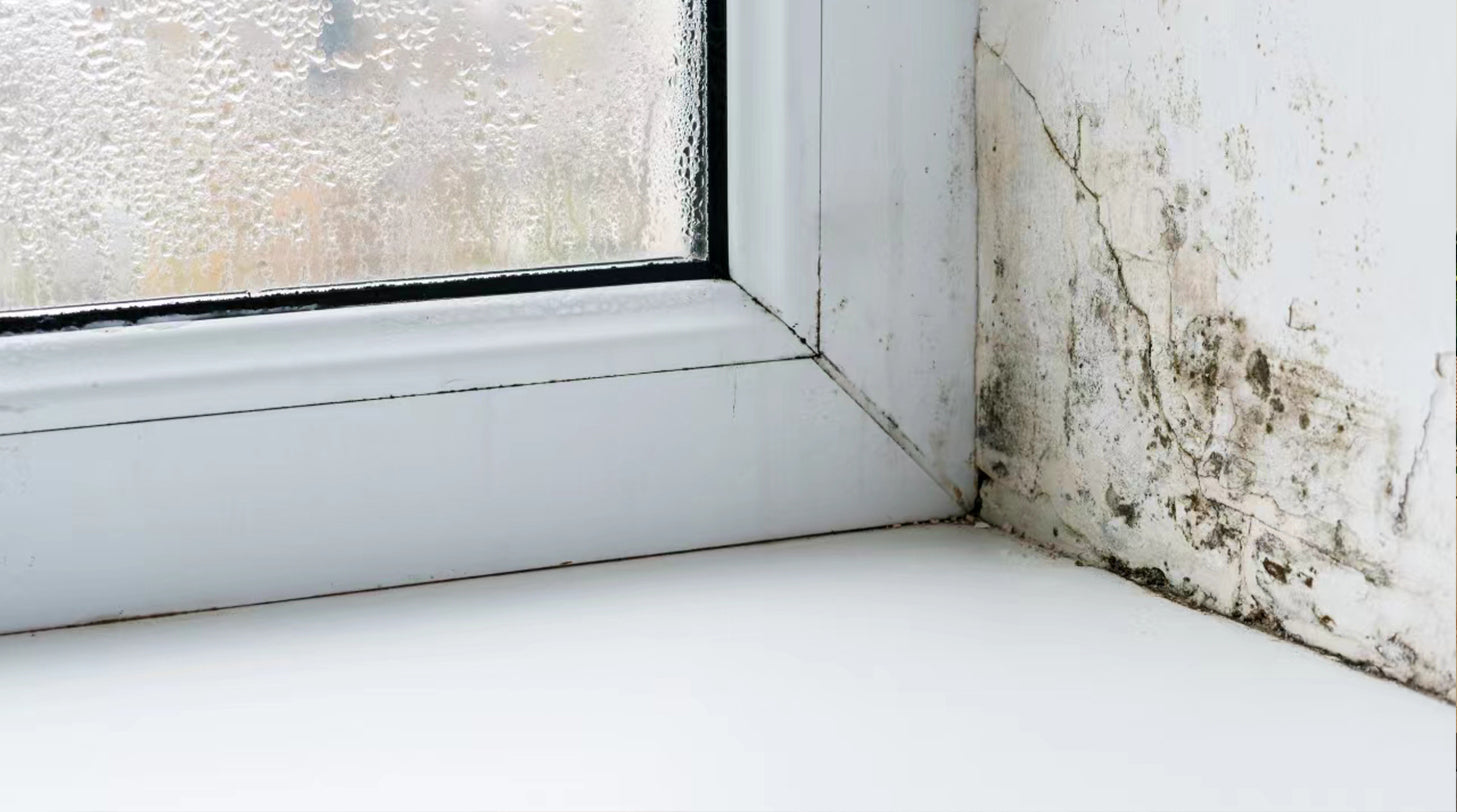Proper ventilation to prevent mold
Dark spots on walls are often a sign of mold. This isn't just a visual flaw; Mold is harmful to your health and has been linked to a variety of illnesses. Fungal infections can also damage structures in the long term. To prevent the formation of mold, reducing humidity is an effective measure. Proper ventilation and heating can often prevent mold in your home. The key is optimal air circulation in the individual rooms and adapting the ventilation behavior to the outside temperature.
How to prevent mold and mildew with proper ventilation
Mold is a type of fungus that requires heat and moisture to grow. Mold is particularly likely to thrive at room temperature and relative humidity above 60%. The more humid the air in a room, the more likely it is that black mold will appear. To reduce the humidity in your home and prevent mold from forming, you need to ventilate your home regularly.
Mold: Danger to your health
The federal Environment Agency has warned in a guide that staying in a room with a mold infestation could have consequences. Mold spores in the air can be particularly harmful to the respiratory tract. People with asthma are particularly susceptible and experience more severe symptoms. But runny noses, coughs, and respiratory infections are also often associated with mold on your walls. It is also suspected that the incidence of allergies will increase if you live under a moldy blanket for a long time. The guidance recommends reducing the humidity in a room to minimize the health risks posed by mold.
Proper ventilation and heating to prevent mold
Lowering humidity is the most effective way to prevent mold growth. Open windows to ventilate and replace humid indoor air with dry air from outside. Frequent ventilation is best so the room doesn't cool down too much. Sloping windows, on the other hand, only allow very slow air exchange and cause the temperature of the wall near the window to drop too much.
The better the air circulation, the faster the indoor air exchange during rapid ventilation. A duration of five to ten minutes is usually optimal. Turn off the heater when ventilating to save on heating costs.
How to effectively reduce humidity through ventilation
Proper ventilation means fresh air outside contains less moisture than stale air indoors. This occurs when the outside temperature is lower than the indoor temperature: because cold air can hold less water than hot air, cold air will be drier given the same relative humidity.
While you can ventilate at any time during the winter to reduce humidity and thereby prevent mold, the warmer the outside temperature is in the summer, the more moisture in the air that enters the apartment when ventilating becomes dangerous. If the fresh air inside the house cools, humidity increases and quickly builds up on walls and window panes. In the summer, ventilate when it's coolest outside (i.e. late at night or early in the morning).
How often do you need to ventilate the air to prevent mold?
Everyone adds humidity through breathing, and household activities such as showering and washing also contribute to increasing air humidity. The Federal Environment Agency calculated in a guide that a household of three people emits approximately 6 to 14 kilograms of water per day. In order to let the moisture out of the room, you must ventilate it about seven times a day.
Proper ventilation starts with room furnishings
Good air circulation is a prerequisite for effective air exchange during impingement ventilation. This is why wide opening windows are preferable to slanted windows. You can further increase the air exchange rate by opening the interior doors and windows of your apartment. If you open the windows on both sides of the house, ventilation will occur especially quickly. Through so-called cross ventilation, a short time is enough to replace the indoor air with fresh air.
However, it is also necessary that the air exchange in the room is not hindered. Therefore, be sure to open the curtains when drying! It is best to place large pieces of furniture a few centimeters from the walls and ceiling so that air can still circulate between them. Since the coldest surfaces in your home are most likely to be affected by moisture and mold growth, you should avoid placing larger cabinets on exterior walls and instead place them on the side of interior rooms in your home.
How to correctly adjust ventilation according to structural characteristics
Condensation often occurs on poorly insulated window panes because they quickly lose heat to the outside. Likewise, louver boxes and other fixtures can also cause thermal bridges, as these areas have the highest humidity in the room and are therefore most susceptible to the effects of mold. If you can't provide better insulation, ventilate it more frequently and warm the interior a little.
If you're moving into a new building, the walls may not be completely dry yet. To prevent mold from settling, you must first increase heating and ventilation. In this case, increased ventilation does not mean opening windows longer, but opening them more frequently during the day. Up to two heating periods may be required until all components are dry and the humidity in the new building returns to normal.
Ventilate during periods of high humidity to prevent mold formation
Certain activities, such as cooking or showering, release large amounts of water into the air in a short period of time. Large amounts of moisture can quickly settle in cooler areas of your home and promote the formation of mold stains. Ventilate immediately after completing activities to allow outdoor moisture to peak. During this time, keep interior doors closed to prevent moist air from spreading to the rest of the apartment.If possible, move clothing outside to dry during the summer. Since damp laundry can cause increased humidity over time, you should increase the room temperature.

